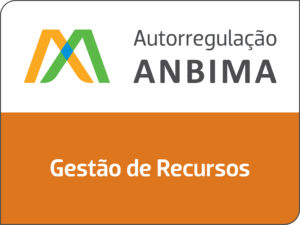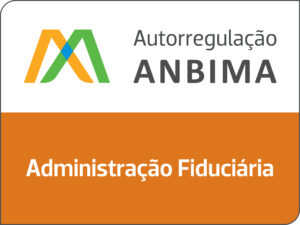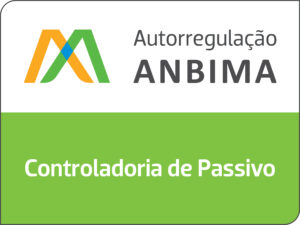Referências Bibliográficas Cartas Dynamo 123 e 124
- Asness, C. (2024) The less-efficient market hypothesis. Forthcoming in the 50th Anniversary of the Journal of Portfolio Management.
- Asness, C. (2023) No one would call Warren Buffett a Quant. Interview for Bloomberg Wealth and David Rubenstein, recorded on Apr, 24th.
- https://www.youtube.com/watch?v=T8ehhjPpoHk
- Bank of America (BofA, 2025) Thematic Investing: The world in 2030, jan25
- Bebchuk, L., Hirst, S. (2019) The specter of the giant three. ecgi, Finance Working Paper n. 608/2019
- Bebchuk, L., Hirst, S. (2020) Index funds and the future of corporate governance: theory, evidence and policy. Ecgi, Law Working Paper n. 433/2018
- Beck, P., Bouchaud, JP, Villamaina, D. (2024) Ponzi funds. https://ssrn.com/abstract=4834390
- Beggs, W., Brogaard, J., Hill-Kleespie, A. (2019) Quantitative Investing and Market Instability.
- Electronic copy available at: https://papers.ssrn.com/sol3/papers.cfm?abstract_id=3281447
- Bender, M., Claphan, B., Scwemmhein, B. (2024) Shifting volumes to the close: consequences for price discovery and market quality.
- Biais, B. & Foucault, T. (2014) HFT and Market Quality. Bankers, Markets & Investors n. 128, jan-fev14.
- SSRN https://papers.ssrn.com/sol3/papers.cfm?abstract_id=4757345
- Berkin, A., Swedroe, L. (2016) Your Complete Guide to Factor-Based Investing. Bam Alliance Press.
- Bernstein, P. (1999) The Velocity of Learning and the Future of Active Management. Economics and Portfolio Strategy.
- Bouchaud, JP., Bonart, J., Donier, J., Gould, M. (2018) Trades, Quotes and Prices. Financial Markets under the Microscope. Cambridge University Press.
- Bouchaud, JP (2021) The inelastic market hypothesis: a microstructural interpretation. https://ssrn.com/abstract=3896981
- Bouchaud, JP (2022) Post at Linkedin
- https://www.linkedin.com/posts/jean-philippe-bouchaud-bb08a15_markets-microstructure-noise-activity-7009627137687044096-Zcm0/
- Brasil, Bolsa, Balcão, (B3, 2024) Pessoas Físicas – Uma analise da evolução dos investidores na B3. Set24
- Brav, A., Mlenko, A., Malenko, N. (2023) Corporate Governance implications of the passive growth in indexing. ecgi, Finance Working Paper n. 849/2023
- Buffett, W. (2017) Berkshire Hathaway, Shareholders Letter 2016
- Business Wire, (2018) Index Industry Association Surveys the Index Universe
- Chen, K., Heater, J. (2024) Passive funds, ownership dynamics, and corporate governance.
- Cochrane, J. (2011) Discount Rates. NBER, Working Paper 16972
- Comissão de Valores Mobiliarios CVM(2021) Ofertas RLP–Nova Proposta para expansão do programa experimental. Ofício Interno n. 33/2021/CVM/GMA-2
- Cox, R., Kamolsareeratana, A., Kouwenberg (2020) Compulsive Gambling in the Financial Markets: Evidence from Two Investors Survey. Journal of Banking and Finance 111
- Doherty, K. (2025) Wall Street enters a darker age with most stock trading hidden, Bloomberg, 24. Jan.25.
- Dynamo (2012) Carta Dynamo 73, ¼ 2012
- Fisch, J., Hamdani, A., Solomon, S. (2020) The new titans of Wall Street: a theoretical framework for passive investors. ecgi, Law Working Paper n. 414/2018
- Gabaix, X., Koijen., X. (2021) In search of the origins of financial fluctuations: the inelastic market hypothesis. NBER, working paper 28967
- GMO (2024) FAQ: Passive Investing, Quarterly Letter 2Q2024
- Haddad, V., Huebner, P., Loualiche, E. (2024) How competitive is the stock market? Theory, evidence from portfolios, and implications for the rise of passive investing.
- Harford, J. (2017) Why the worlds biggest investor backs the simplest investment. BBC Radio World Service, 50 Things That Made the Modern Economy
- Hofner, P., Schlag, C., Schmeling, M. (2023) Passive investing and market quality
- Ilmanen, A. (2022) Investing Amid Low Expected Returns: Making the Most When Markets Offer the Least. John Wiley & Sons
- International Monetary Fund (2024) Global Stability Financial Report. Steadying the Course: Uncertainty, Artificial Intelligence, and Financial Stability. Oct, 2024.
- Kirilenko, A., Kylw, A., Samadi, M., Tuzun, T. (2014) The Flash Crash: The Impact of High Frequency Trading on an Electronic Market.
- Kumar, A. (2009) Who gambles in the stock market? The journal of finance jul2009.
- La Roche, J. (2016) 20 years ago, Bill Ackman asked Warren Buffett and Charlie Munger about a risk the market faces today. Yahoo!finance
- Morningstar (2024) Morningstar´s US Actice/Passive Barometer. Sep24
- Nahar, J., Nishat, N., Shoaib, A., Hossain, Q. (2024) Market efficiency and stability in the era of HFT: a comprehensive review. ResearchGate jun24.
- Pedersen, L. (2018) Sharpening the arithmetic of active management. Financial Analysts Journal, 74 (1)
- (2018) The (mis)uses of the S&P 500. The University of Chicago Business Law Review (vol2) https://papers.ssrn.com/sol3/papers.cfm?abstract_id=3205235
- Robertson, A. (2019) Passive in name only: delegated management and “index” investing https://ssrn.com/abstract=3244991
- Sharp, W. (1991) The arithmetic of active management, Financial Analysts Journal 47 (1)
- Slimmon, A., Delany, L. (2018) Quantamental Investing: The Future is Now. Morgan Stanley Investment Management, May, 2018.,
- Surowiecki, J. (2004) The Wisdom of Crowds: Why the Many Are Smarter Than the Few and How Collective Wisdom Shapes Business, Economies, Societies and Nations,
- Udland, M. (2017) Jack Bogle envisions chaos, catastrophe in markets if everyone were to index. Yahoo!finance
- Wigglesworth, R. (2021) Trillions: How a Band of Wall Street Renegades Invented the Index Fund and Changed Finance Forever. Portfolio/Penguin.
- Zhang, F., Powell, S. (2011) The impact of HFT on markets. CFA Magazine, mar/apr2011.





